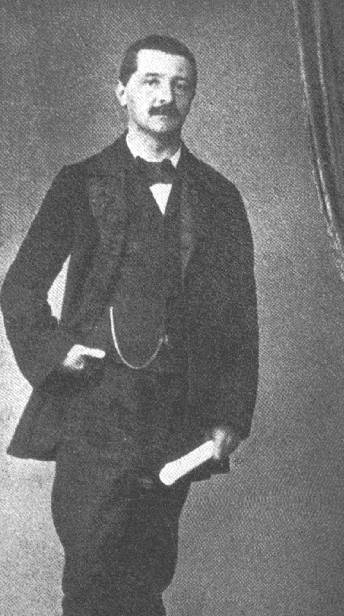Anton Bruckner
Te Deum in C major, for soloists, chorus, orchestra & organ, WAB 45
Description by Wayne Reisig [-]
Although they speak much of the same language as the symphonies and masses, Anton Bruckner‘s other choral works tend toward a certain conciseness, being epic by implication. This can be said of his Te Deum, arguably the crown of his sacred music. Bruckner singled out this work as his own personal favorite, referring to it as “the pride of my life.” It is certainly one of the most positive, joyous, and compelling ever to come from his pen and is believed to have been the last music of his that he attended in live performance. Composed from 1881 to 1884, it is contemporary with the Seventh Symphony, with which it shares some very significant thematic material. The Te Deum reflects the contemporary frame of mind of its composer, being one of elation and thankfulness for his long-delayed success and acceptance. The then-recent performance of the Fourth Symphony by the Vienna Philharmonic under Hans Richter had been the breakthrough for Bruckner.
As with the later Psalm 150, there are moments in the Te Deum where barbaric opulence coexists with intense spirituality, a quality harkening back to the Baroque arts. The work opens in blazing C major, propelled by a powerful open-fifths motive in the strings. The chorus and the rest of the ensemble enter as the music moves through processes and modulations distinctly Brucknerian. The following F minor section, “Te Ergo,” is serene yet imploring in nature, featuring an expressive tenor solo and a solo violin which can hardly fail to bring to mind the “Benedictus” from Beethoven‘s Missa Solemnis. The central section, “Aeterna Fac,” is in Bruckner‘s favored key of D minor and is almost apocalyptic in its fury. Propelled by a rhythmic device similar to one used in the Sixth Symphony and String Quintet, it draws on the full resources of the chorus and orchestra before coming to and abrupt unresolved cadence. The “Salvum Fac Populum” section follows essentially as a repeat of the “Te Ergo,” this time with women’s voices accompanying the tenor. This leads to the “Per Singulos” which recalls the fervor and energy of the opening. The overall symmetry of the work is now apparent, but the final section is an apotheosis built entirely on the words “In Te Domine Speravi. Non confundar in Aeternum” (“In Thee, Lord, I have trusted. Never let me be confounded”), words which form a motto for Bruckner‘s life work. The section culminates in a joyous fugue and is followed by an intensely haunting and impassioned chorale, the latter of which would later be used to great effect in the slow movement of the Seventh Symphony. The opening string figure returns as the full ensemble carries the Te Deum to a terse yet powerful conclusion.
https://www.allmusic.com/composition/te-deum-in-c-major-for-soloists-chorus-orchestra-organ-wab-45-mc0002367127
Anton Bruckner: Symphony No. 5 in B-flat major (Chailly, Koninklijk Concertgebouworkest)
http://www.controappuntoblog.org/2017/12/08/anton-bruckner-symphony-no-5-in-b-flat-major-chailly-koninklijk-concertgebouworkest/
A. Bruckner – Mass No.3 in F minor, WAB 28 ed altro di Bruckner …
Anton Bruckner | controappuntoblog.org
Symphony No 5″ Bruckner : Karajan , Abbado – 2 Adagio …
Anton Bruckner | controappuntoblog.org
Sinfonia n. 3 in re minore “Wagner-Symphonie” : Anton Bruckner
Locus iste reduction with analysis – e video : Anton Bruckner
Anton Bruckner Symphony #7 in E Major
István Kertész – Bruckner Symphony 4 – controappuntoblog
Bruckner – Adagio per archi dal quintetto in Fa minore ..
Anton Bruckner – Symphony no. 8 “Apocalyptic” conducted …
BRUCKNER Symphony No.2 (complete) Alexander Rahbari …
Forse un mattino andando in un’aria di vetro. BRUCKNER …
Anton Bruckner Symphony No. 6 in A major – Daniel Barenboim – III Jaap van Zweden – I (Eugen Jochum 1967)
Anton Bruckner Symphony No. 9
http://www.controappuntoblog.org/2016/07/31/anton-bruckner-symphony-no-9/

